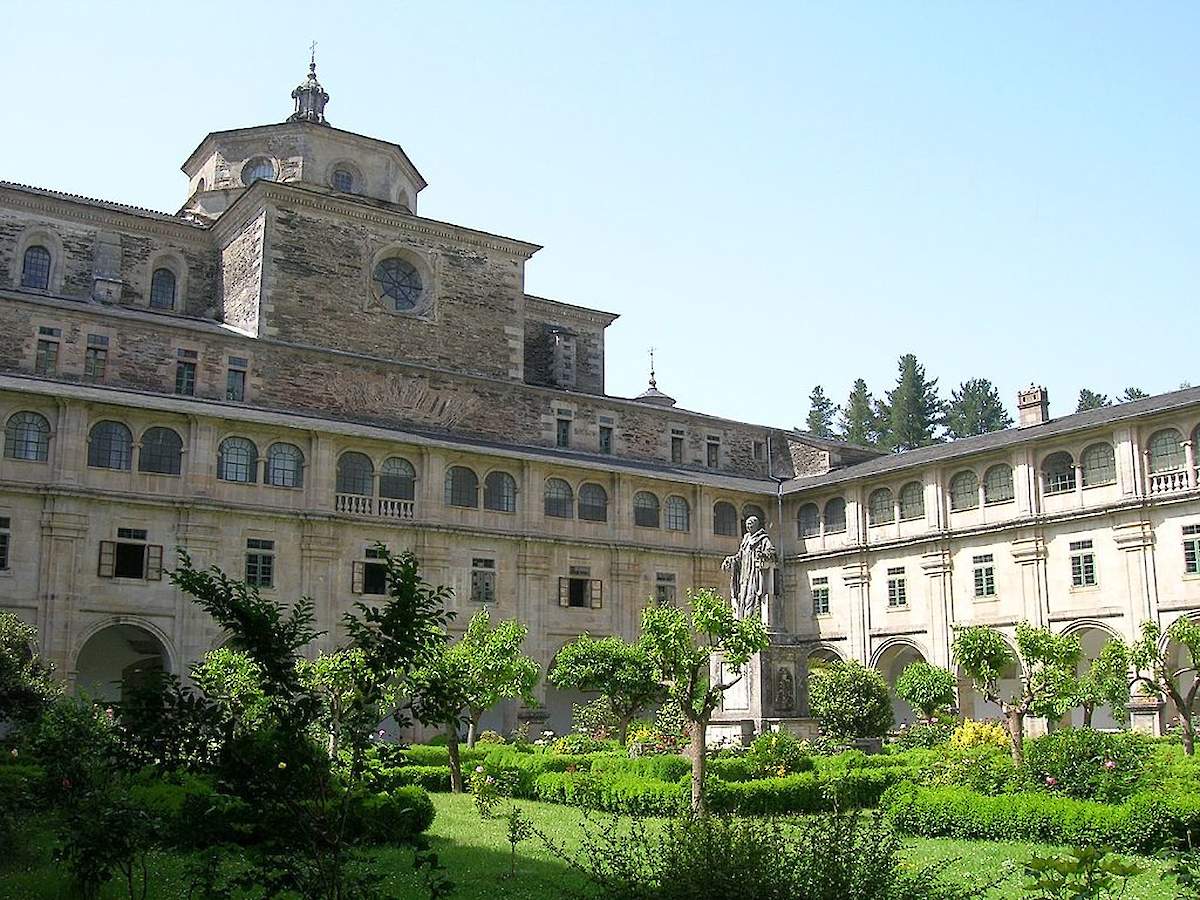
Walking into the heart of Galicia
Leaving the province of Leon, we enter the region of Galicia to visit two towns, Sarria and Samos, at the halfway point along our journey. A popular spot for some to begin the Camino, Sarria is the final starting point for pilgrims to complete the minimum distance required for the Compostelana (pilgrim certificate for completing the Camino). It’s 111km away from Santiago de Compostela and the minimum distance to officially receive recognition for completing the Camino is 100km.
Sarria was founded by Alfonso IX and has been a pilgrimage starting point since the Middle Ages. The area’s popularity inspired the creation of several monasteries including St. Stephen of Calvor (785 AD) and St. Mary of Corvelle (857 AD). As a result, the area has a great artistic heritage characterized by ancient architecture and cultural influence from around the world.
The Monastery and Church of La Magdalena is another popular monument in Sarria along the Way. La Magdalena was founded at the beginning of the 13th century by two Italians of the Order of the Blessed Martyrs of Christ, and was used as a hospital and shelter for pilgrims. Today, it serves as a national monument to visit and also as a hostel for travelers.
In addition to its history and cultural sites, Sarria has beautiful outdoor space with recreational areas for fishing, hunting, hiking, and horseback riding. While walking, pilgrims pass through hamlets, grazing pastures, woodlands, and horreos, or the first raised grain silos over the Meseta Lucense, or Lugo Plateau. Additionally, we enter the region of great Galician cuisine, including Galician stew, octopus, sausages and cold meats, and game.
After Sarria, we approach Samos, home of Monasterio de San Julián de Samos. Samos Monastery is one of the many we see along the Way, however, it is one of the most significant monasteries in Spanish history. The structure itself is absolutely stunning. It was first built in the sixth century and by the Middle Ages it controlled 300 lesser monasteries, 100 churches, being supported by the rent paid by the residents of 200 towns and villages, making it one of the wealthiest and most powerful monasteries in Spain. Samos Monastery has suffered many fires and destruction to its structure over the course of time, but its current façade remains from the 18th century including the largest cloister in Spain, the Feijoo cloister, featuring a statue of the well-known Bishop Benito Jeronimo Feijoo. In addition to its role as an education center for sons of nobility, Samos Monastery stood out from the rest for its role as an important pharmacy, forge, and pilgrim’s hospice along the Camino de Santiago.
After visiting beautiful Monasteries in Galicia, we’ll visit Portomarin in the province of Lugo on our next stop along the virtual Camino!